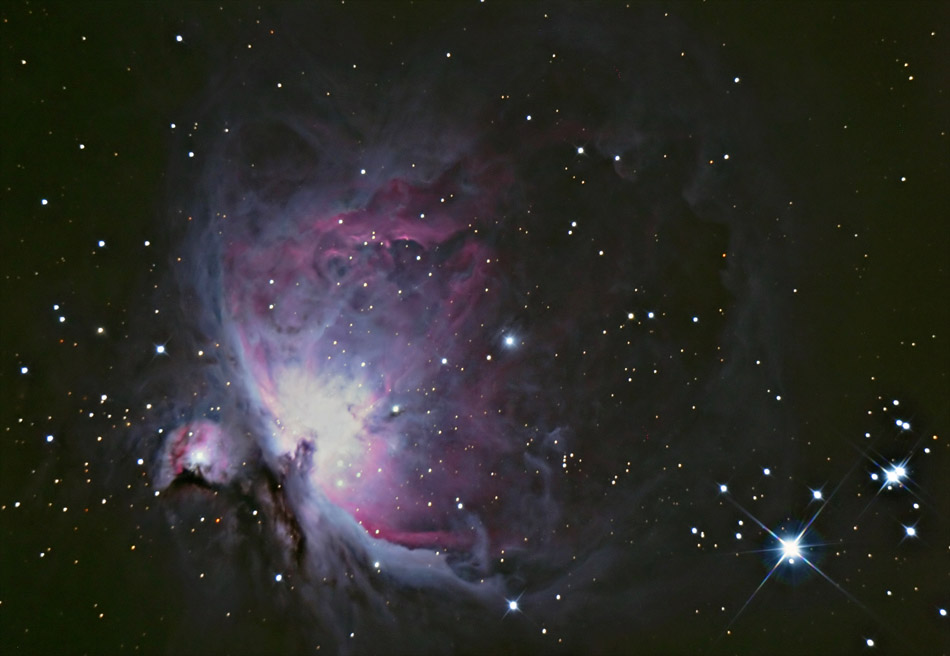
Photo: Rochus Hess | Wikimedia Commons
1977 marks the year when Earth’s farthest-reaching spacecraft, Voyager, was launched. On its journey, it was innocuously taking pictures of astronomical objects, and heading to explore the outer planets of the suburb of the universe which we call “The Solar System”. Voyager had a collection of snippets of human culture: classical music, archaic paintings including the drawings of a human being, and references to DNA amongst other things. Hopes were that should an alien civilization stumble upon it (and possibly decipher it), it would realize that the infinite spaces of the universe aren’t empty. 14 after its launch, Voyager was to give us a picture that inspired the most famous caption in all of astronomy:
“Look again at that dot. That’s here. That’s home. That’s us. On it, everyone you love, everyone you know, everyone you ever heard of, every human being who ever was, lived out their lives. The aggregate of our joy and suffering, thousands of confident religions, ideologies, and economic doctrines, every hunter and forager, every hero and coward, every creator and destroyer of civilization, every king and peasant, every young couple in love, every mother and father, hopeful child, inventor and explorer, every teacher of morals, every corrupt politician, every “superstar,” every “supreme leader,” every saint and sinner in the history of our species lived there-on a mote of dust suspended in a sunbeam.”
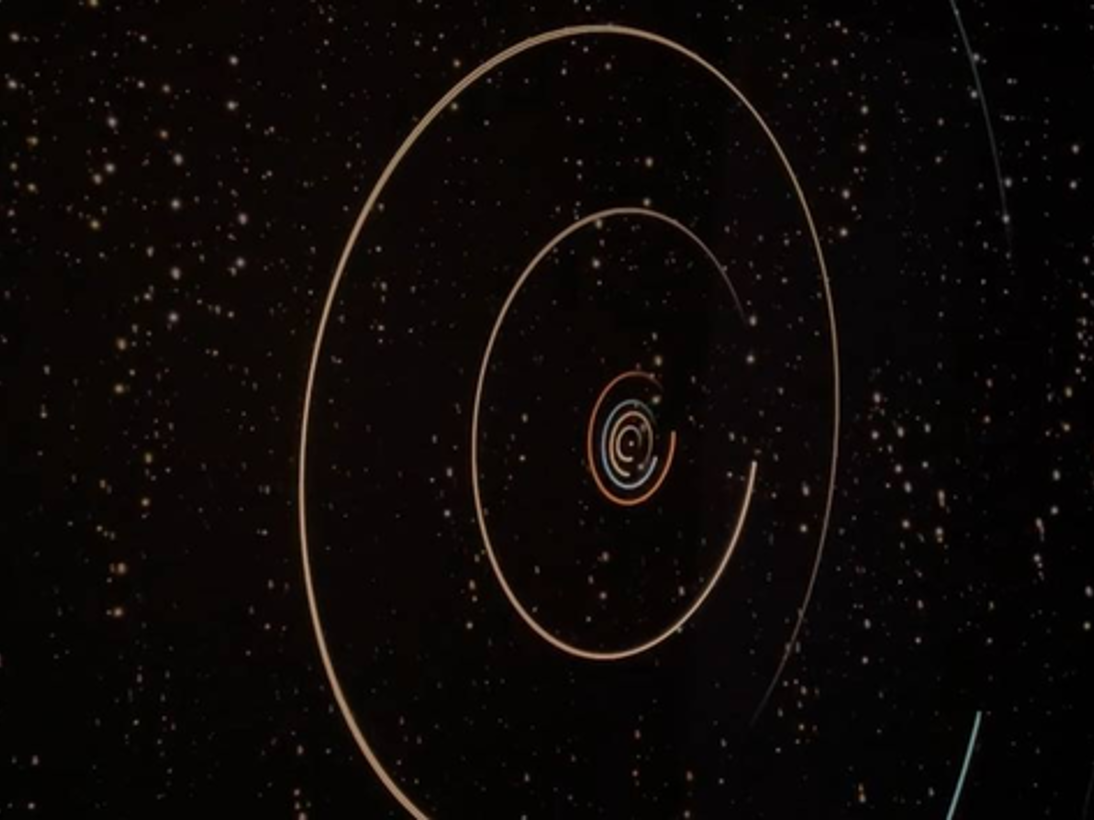
Photo: Irinazavgorodnia | Wikimedia Commons
These arresting lines came about after the Voyager had taken a photograph of the Earth from some 3 billion kilometers away. Voyager achieved such a staggering distance after traveling in space for 13 years. 14th February, the day of romance as it is perceived in the wider society, marked the day when the photograph was taken. The romance of the photograph was expounded on even further by Carl Sagan, who was (and some say he still is) to become the world’s most famous astronomer:
“The Earth is a very small stage in a vast cosmic arena. Think of the endless cruelties visited by the inhabitants of one corner of this pixel on the scarcely distinguishable inhabitants of some other corner, how frequent their misunderstandings, how eager they are to kill one another, how fervent their hatreds. Think of the rivers of blood spilled by all those generals and emperors so that, in glory and triumph, they could become the momentary masters of a fraction of a dot. “
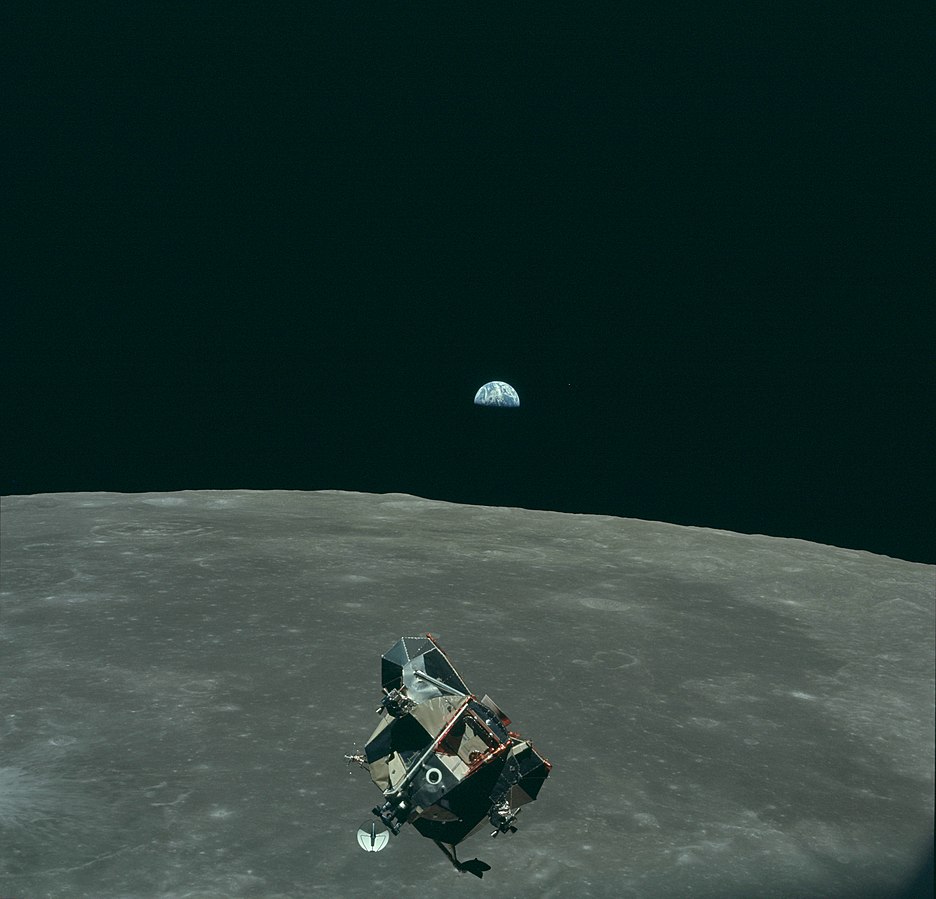
One can hardly recognize the Earth in this photograph, which has posed an existential question for the human species. The questions that are brought up are, “Why are we here?” and, “Is our existence a mere fluke?”. Sagan was a philosopher of the highest kind (before the use of the term “Scientist”, practitioners of Science were called “natural philosophers”), who in his book “Cosmos” tries to answer a throng of questions that are not limited to the ones asked above.
How do we describe the totality of what’s around us? “Suchness” or “Thusness” is a term that has religious connotations, and there’s a wonderful quote in the Taoist philosophy: “10 thousand formations, one suchness”. Buddhists also use the term “pratitya-samutpada” meaning that everything originates with a mutual dependence on everything else. Scientifically, the word “universe” is used to mean everything that we can see which is why another term “the un-observable universe” is used to denote patches of space and time that are shielded away from us. Sagan gives us a definition of the word he has chosen as the title of the book:”The cosmos is all there is, ever was or ever will be,”
The words that follow these are some of the best popular science writing has to offer us. Consider his description of other things. A “book”:
“What an astonishing thing a book is…one glance at it and you’re inside the mind of another person, maybe somebody dead for thousands of years. Across the millennia, an author is speaking clearly and silently inside your head, directly to you. Writing is perhaps the greatest of human inventions, binding together people who never knew each other, citizens of distant epochs. Books break the shackles of time. A book is proof that humans are capable of working magic.”

Photo: oliwok | Wikimedia Commons
A star:
“The nitrogen in our DNA, the calcium in our teeth, the iron in our blood, the carbon in our apple pies were made in the interiors of collapsing stars. We are made of starstuff.”
A DNA:
“There’s as many atoms in a single molecule of your DNA as there are stars in the typical galaxy. We are, each of us, a little universe.”
The cycle of a breath:
“What a marvelous cooperative arrangement of plants and animals, each inhaling the other’s exhalation. It’s a kind of planet-wide mutual mouth-to-stoma resuscitation, the entire elegant cycle powered by a star 150 million kilometers away.“
Carl Sagan was known as “The Cosmos Man”, and for a very good reason at that. He worked in what is now known as the Miller-Urey experiment. Its experimental setup involved a giant conical flask containing the more abundant chemistries we find on the Earth: water, ammonia, hydrogen, and methane. Bombarding this mixture with electrical discharges to mimic lightning flashes led to the formation of rise to complex molecules. Though complex molecules aren’t living on their own, they’re some wonderful start, a building block of sorts.
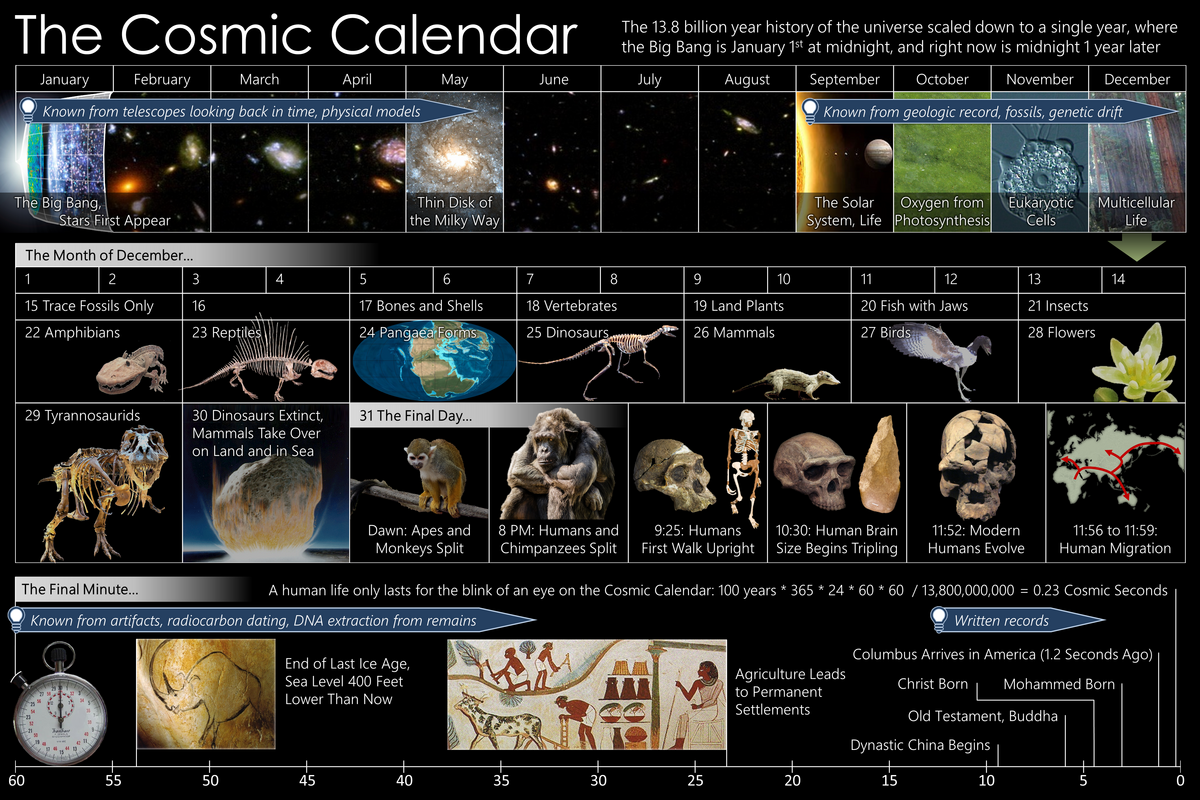
Photo: User:Efbrazil | Wikimedia Commons
Carl Sagan also helped popularize the Cosmic Calendar, a more relatable way of looking at how tiny our lives- in comparison to the age of the universe- are. Consider January 1, 2022, 12 a.m. to be when it Big-Banged, and the current time to be January 1, 2023 a.m. In this compressed timescale, the first oxygen from photosynthesis was produced in October- showing how nascent life on Earth is. It was only on the 18th of December that vertebrates were formed, Dinosaurs came into existence on the 25th, only to die out on the 30th of December.
The compendium of the history of human life can be traced in the last one and a half hours in the Cosmic Calendar- agriculture beginning 28 seconds ago, the birth of Siddhartha Gautam (Gautama Buddha) a mere six seconds ago, and the rest of the 2,500 years since into the last six seconds. To put the lives of ordinary human beings into such a perspective is to conclude that our lifespans are no greater than the blink of an eye. As Sagan himself says: “We are like butterflies who flutter for a day and think it is forever.”
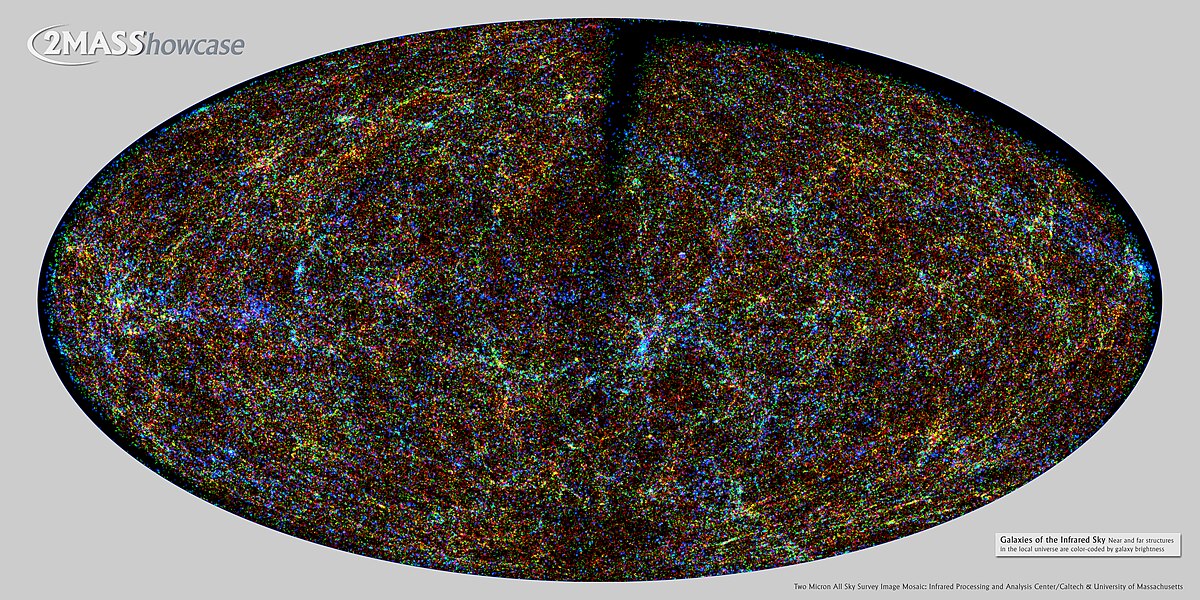
Photo: 2MASS/T. H. Jarrett, J. Carpenter, & R. Hurt | Wikimedia Commons
To read Cosmos is to be awed by the rich treasure trove of mini-biographies of scientists of the yesteryears such as Kepler, Huygens, Eratosthenes, Tycho Brahe, etc- all of whom made some wonderful contributions to the field of “Cosmos”. In reading Cosmos we get a measure of the follies of these great humans: Newton in his pursuit of finding the compositions of stars stared at the naked Sun, almost maddeningly for prolonged hours and was almost blinded; Kepler, much to the consternation of his wife had thought of himself above of his household responsibilities; the notion that comets were the reproductive cells, the eggs or sperm, of planetary systems, was something that David Hume held onto dearly (Hume even claimed that planets came into existence by interstellar sex of a kind); and dialectical pantheons such as Plato and Aristotle, who folded their arms to the problem of the ownership of slaves.
During the production of the corresponding TV series “Cosmos”, Sagan went off on a holiday in Paris- much to the dismay of the producers (thereby showing that he wasn’t immune to personal foibles either). Paris helped the romance that was brewing with Ann Druyan achieve greater heights. The book opens gloriously with a dedication to her: “In the vastness of space and the immensity of time, it is my joy to share a planet and an epoch with Annie.” The rest of the book gleams with Sagan’s first love: ideas.
